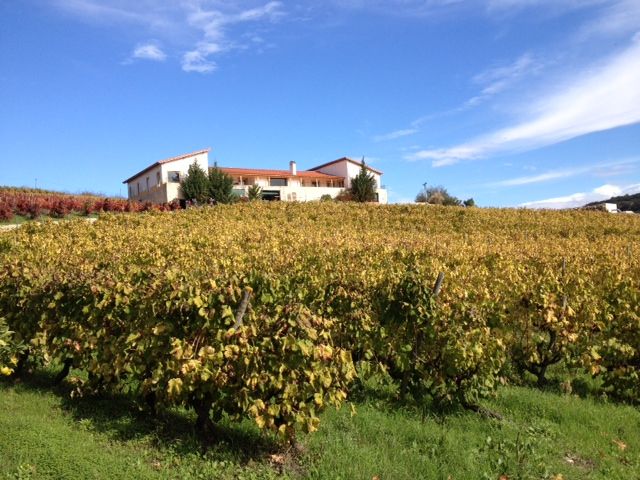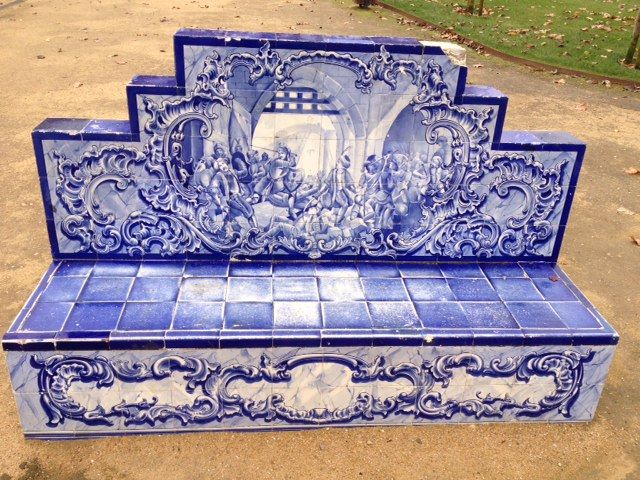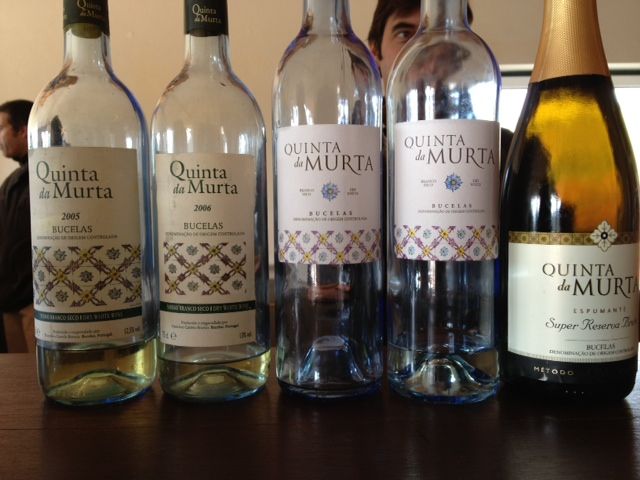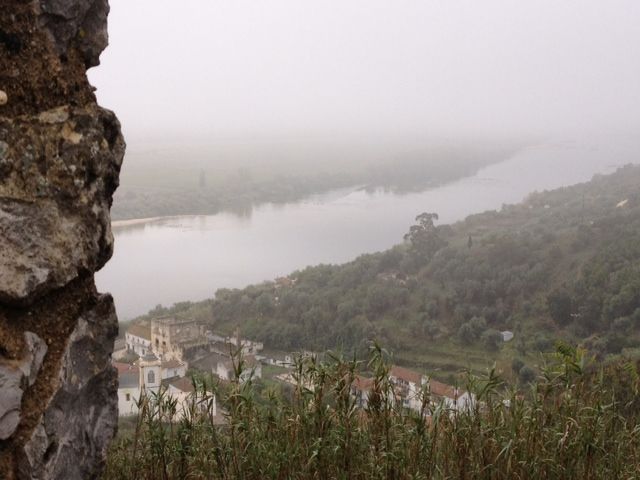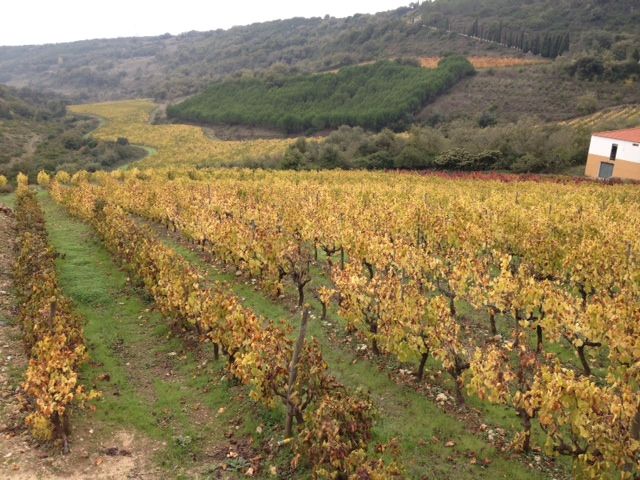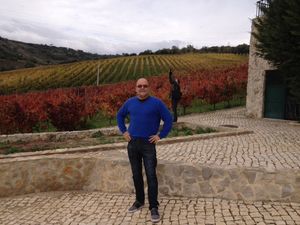Brazil native Eugenio Jardim has been the wine director at Jardinière since 2001, and has built a reputation for seeking out the new and exciting wines of the world. His approach to wine is fun but professional, educational and nonthreatening, creating an enjoyable experience rather than an intimidating one. Jardim’s philosophy is driven by his passion for finding little-known wines from small growers with flavors that are drawn from the vineyards rather than manipulated by chemistry.
Eugenio is also the Bay Area ambassador for the Vini Portugal campaign to promote the dry wines of the country. He is currently visiting the Tejo, Lisboa, and Alentejo regions of Portugal, and is sharing with us a few of his notes (and pictures) from the road!
Days 4 and 5 As our exploration of Portuguese wines continue, our group wonders why the country’s wines are not at the top of everyone’s shopping list? The winemakers and other people we spoke with all showed much concern about the imminent financial crisis in their country, with the wine industry now setting their sights on the mostly untapped American market.
We continued our trip and moved from the vast plains of the Alentejo region and headed north to the region formerly known as Ribatejo, now called Tejo, to visit the gorgeous old city of Santarém. Even though it’s only a 45-minute drive from Lisbon, the old “cultural capital” of Portugal seems very remote. Both the old and new buildings were adorned with beautiful tile facades while the narrow cobblestone streets inevitably led to one of the many Gothic churches that are all around town. We visited a church that houses the tomb of Pedro Álvares Cabral, who “discovered” Brazil in the year 1500. The history in this marvelous hilltop fortress is carried across all of the beautiful estates peppered throughout the region. In the olden days, the Portuguese royal family and their friends came to spend their weekends in this area, often arriving by boat after sailing up the Tejo River. While at their weekend retreat, they passed much of the time hunting.
The Tejo region is perceived throughout the country, and wine community at large, as an area of mass-produced wines without much character. We found this to be untrue! Here, more than in any other region, we felt the struggle of the producers trying to figure out what to do to make an impression on the American wine market. Some producers have gone to the extreme of translating their labels to help consumers make quick decisions in a supermarket or wine shop. This struggle has also opened the doors to international grape varieties like merlot and cabernet sauvignon. Our group’s opinion is that the Portuguese wines have enough appeal and complexity to stand on their own, but the difficulties with the pronunciation of wines such as trincadeira and castelão may keep consumers in America from ordering them.
We tried some outstanding examples of wine made exclusively from native varieties, yet the producers remain skeptical about their international acceptability. At an amazing luncheon with the extremely hospitable folks from Tejo, we tried sopa de pedra, the local specialty. Legend has it that a very poor monk who wandered the streets of Almeirim not wanting to be perceived as a beggar would tell the locals that he was feeding himself by making soup out of stones for supper, which prompted the locals to donate whatever they had extra in their pantries to his soup. Normally that meant the least desired pig parts, beans, tomatoes, and morcilla (blood sausage). Although they later found out they were being tricked, the sopa became famous. To this day the local restaurants still add one rock to every pot of soup served.
Only in Portugal!
The end of the journey approaches. Just a short drive north beyond the outskirts of Lisbon lays one of the brightest stars on the Portuguese white wine constellation, Bucelas. The humble surroundings and the relatively rough roads did not prepare us for the brilliance and finesse of the wines we were to find here. We would have guessed something special was coming had we noticed the twinkle in Martha’s eyes, our knowledgeable and extremely accommodating Portuguese educator and guide. Bucelas is a very small region with just over 200 hectares, but size does not tell the whole story, not by a long shot. Here the arinto grape finds its true nature and most glorious expression. Followed by two consorts of native varieties, rabo de ovelha and esgana de cão, this great trio of grapes call home the steep south-facing slopes, which take full advantage of the cool breezes coming from the Atlantic, which is only 20 kilometers away.
Our first and perhaps most mind-bending stop was at Quinta da Murta, where we had a unique, and first for all of us, vertical tasting of arinto dating back to 2005. When the “oohs and aahs” came out with the first wine served—the very crisp and clean super reserva bruto espumante—it did cross my mind that the proverbial road would now “slope” downhill, but I was wrong! I’ve never been so happy to be so wrong! The arinto grape is used throughout Portugal to bring up acidity and freshness to many white wine blends, but in Bucelas it has more complexity than in any other area. As we moved back in vintages, the wine “leaped ahead” of us with the most intriguing and unexpected array of aromas, flavors, and textures. While their stainless-steel-fermented bottling went from refreshing citrus and minerals to chamomile with an aged riesling-like petrol aroma, their oak fermentation took a different, but equally exciting, turn toward narcissus flowers and beeswax. All of this merged with arinto’s trademark acidity and minerality.
After we sadly departed Murta. our next stop was at Quinta da Romeira, whose brilliant chief winemaker Nuno do Ó took us on a tour of their umbrella portfolio of Adegas, which includes not only Bucelas but also Lisbon, the Alentejo, the remote Beira Interior, and the famed Douro Valley. Although their arinto was not as profound as we had just experienced, we were elated to listen to such an intelligent and articulate professional give us a master class in grape growing, winemaking, wine chemistry, and much more.
It was very exciting to spend time with a winemaker who does not favor international grape varieties as a way to make Portuguese wines popular. He spoke of his red wines with the honesty that we hope to see in more winemakers all over the globe. He pointed out when his wines seemed out of balance or too alcoholic, and backed up his true preferences as a winemaker with wines of great elegance, structure, and complexity. I later learned that viticulture students at the University of Lisbon study his thesis on tannin management.
This was a day to remember indeed.
It’s a wrap. This stimulating week of exploration and learning about Portugal’s wine culture was an initiative of Master Sommelier Evan Goldstein, who, through his company Full Circle Wine Solutions, works diligently with Vini Portugal in promoting the wines of Portugal.
Vini Portugal is an organization representing the Portuguese wine industry. Their mission is to spread the word about the quality and character of Portuguese wine. Throughout this short week the very hospitable people of Portugal warmly received us.
After visiting so many beautiful quintas and tasting their excellent wines one cannot help but wonder what it will take for them to break through to the American market. It is puzzling to us wine professionals that it hasn’t happened yet, since they are consumer- and food-friendly wines, with admittedly hard-to-pronounce grape varieties. I guarantee you, though, that most non-French-speaking wine consumers can’t properly pronounce Gruaud Larose or Billecart-Salmon either. Strangely enough, that does not stop most people from ordering and consuming these wonderful wines. So why would Portuguese grape varieties with names such as alfrocheiro preto and viosinho deter people from trying them?
I strongly recommend to anyone interested in discovering something new and exciting to try Portuguese wines. When it comes to Portuguese wines, disregard the words on the bottle and enjoy what’s in the glass. Familiarize yourself with the regions and their basic styles and be prepared to be impressed. Just like with Bordeaux and Champagne, don’t worry about the blend of grapes, just enjoy the wines.
Below is my short list, in no particular order, of fantastic producers that, in my opinion, are making world-class wines that deserve a spot on dinner tables and in cellars. Some of these houses produce different types of wines under different names, all with outstanding quality.
*Cartuxa, Alentejo region; whites and reds. *Quinta da Leda, Cima Corgo, Douro Valley; reds. *Herdade da Malhadinha Nova, Alentejo; whites and reds. *Herdade da Mingorra, Alentejo; whites, rosés, and reds. *Casa Cadaval, Tejo; reds. *Pinhal da Torre, Tejo; whites and reds. *Vale de Lobos, Tejo; whites. *Quinta da Murta, Bucelas; sparkling and whites. *Quinta da Romeira, Bucelas; whites. *Quinta do Cardo, Beira Interior; reds. *Corte de Cima, Alentejo; reds.
As they say in Portugal, saude e ate logo.
Eugenio Jardim in the vineyards.
